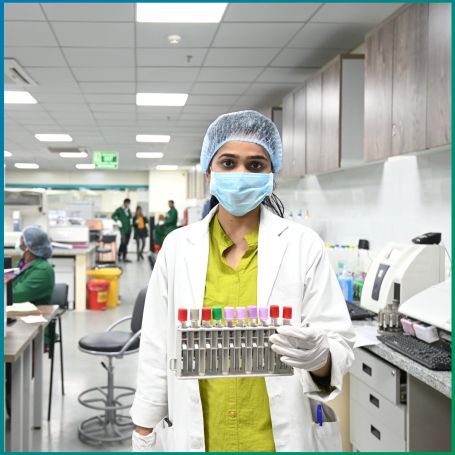
The C/S Bronchial Wash Test is critical in diagnosing various respiratory conditions and infections, especially those affecting the bronchi, lungs, and airways.

The C/S Bronchial Wash Test is an essential diagnostic tool used to identify infections in the lower respiratory tract, particularly when the patient is experiencing persistent symptoms like cough, fever, shortness of breath, and chest pain. This test involves the collection of a fluid sample from the airways, usually after a procedure called bronchoscopy, and is used to culture the sample for the presence of bacteria, fungi, or other pathogens that might be causing respiratory infections. It is an invaluable test for detecting infections that are not easily identified through routine sputum tests or imaging.
1] Preparation: Before the procedure, the patient is typically asked to fast for a few hours. The procedure is usually done in a hospital or clinic setting under local anesthesia or light sedation to minimize discomfort.
2] Bronchoscopy: A bronchoscope (a flexible tube with a camera) is inserted into the patient's airways through the nose or mouth and advanced into the lungs. The bronchoscope allows the doctor to visualize the airways and locate the area from which to collect the sample.
3] Bronchial Washing: Once the bronchoscope is in place, the doctor will inject a sterile saline solution into the bronchial area (the air passages in the lungs). This saline solution is then withdrawn, along with any mucus or other fluids present in the airways, which forms the bronchial wash sample.
4] Collection of Sample: The collected fluid is sent to the laboratory for analysis. The sample is cultured to check for the presence of bacteria, viruses, fungi, or other microorganisms. If a pathogen is identified, further testing (sensitivity testing) is performed to determine which antibiotics or antifungals are most effective in treating the infection.
5] Lab Analysis: In the laboratory, the sample is cultured, and any microorganisms present are identified. Sensitivity testing follows, where the identified pathogens are exposed to different antibiotics to see which ones inhibit their growth, helping doctors determine the most effective treatment.
1] Positive Culture: If pathogens are detected, the lab will identify the type of microorganism (bacteria, fungi, or virus) and perform sensitivity testing to determine which antibiotics or antifungal medications are effective against it.
2] Negative Culture: A negative result means no microorganisms were found in the sample, but it doesn’t rule out infection entirely. Further tests may be required if symptoms persist.
3] White Blood Cell Count: Elevated white blood cells (WBCs) in the bronchial wash sample indicate an inflammatory response, which is common in infections.
4] Mucus or Pus: The presence of pus or thick mucus may indicate an active infection in the respiratory tract.
Choosing best pathology lab test in Pune for your C/S Bronchial Wash Test ensures the highest quality of diagnostic care with accurate, timely results. At Diagnopein, we use advanced lab technology and the latest diagnostic techniques to deliver precise, reliable findings that help in the effective management of respiratory infections. Our expert medical team, including trained pulmonologists and laboratory professionals, ensures that your test is performed with the utmost care and precision.
We also offer home sample collection services for your convenience, making it easier for you to access critical diagnostic tests without the hassle of visiting a clinic. With a focus on personalized care, quick turnaround times, and affordable pricing, Diagnopein is committed to providing you with the best possible healthcare experience. Trust us to guide you through the process, from test collection to treatment, for faster recovery and better health outcomes.
1. Culture Method
2. Sample
3. Colony Count
4. Organism(s) Isolated
5. Culture Report: Culture yields growth of
6. Culture isolated after 7 days :
7. Culture isolated after 14 days:
8. Culture isolated after 21 days:
9. Ampicillin
10. Amikacin
11. Amoxicillin clavulanate
12. cefoperazon+sulbactam
13. Cefuroxime
14. Cefepime
15. Cefotaxime
16. Ciprofloxacin
17. Ertapenem
18. Gentamicin
19. Imipenem
20. Meropenem
21. Norfloxacin
22. Nitrofurantoin
23. Piperacillin-tazobactam
24. Trimethoprim-Sulfamethoxazole (Cotrimoxazole)
The test is performed during bronchoscopy, where a bronchoscope is inserted into the airways to collect a fluid sample (bronchial wash) from the lungs for analysis.
Typically, no special preparation is required, but your doctor will advise you on fasting for a few hours before the procedure and inform you about any medications that might need to be adjusted.
It can diagnose pneumonia, tuberculosis, bronchitis, fungal infections, chronic respiratory infections, and aspiration pneumonitis.
Results indicate the presence of infections (bacterial, fungal, or viral) and help determine which antibiotics or antifungals are most effective for treatment.